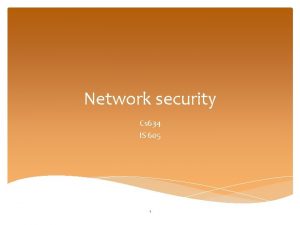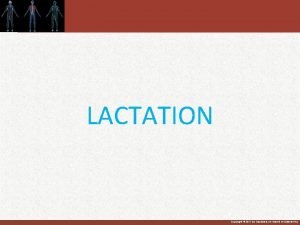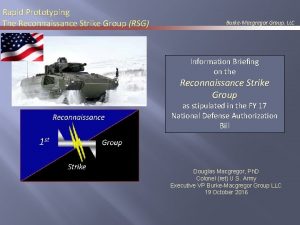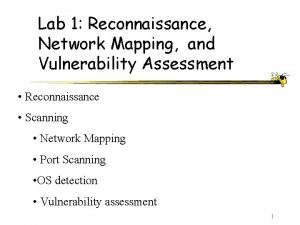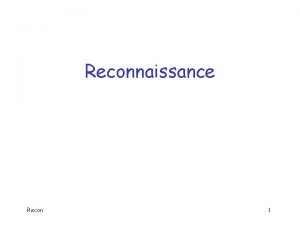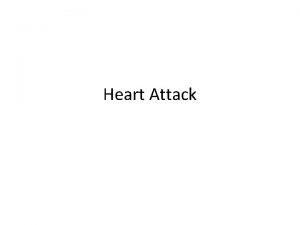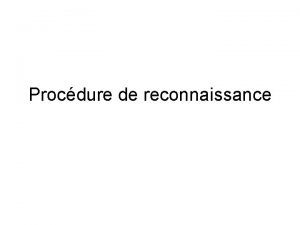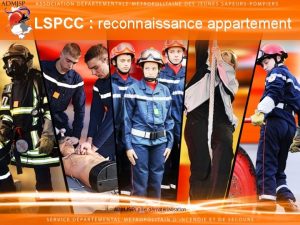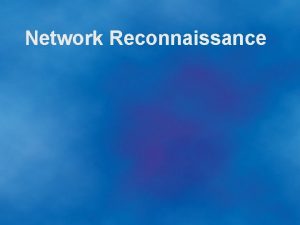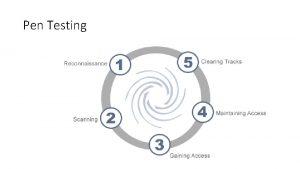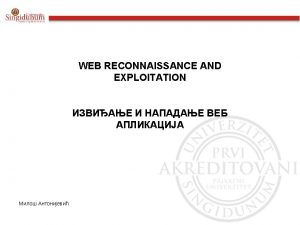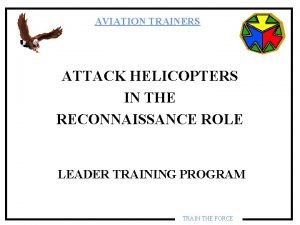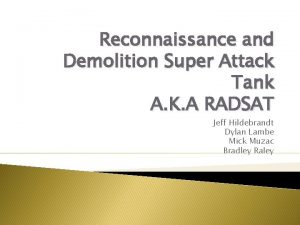IMPRINT Human Performance Modeling for Future Attack Reconnaissance















- Slides: 15

IMPRINT Human Performance Modeling for Future Attack Reconnaissance Aircraft (FARA) Crew Workload and Configuration Assessments Scott Scheff HF Designworks, Inc. November 18, 2020 Distribution A: Approved for Public Release

FVL-ADS Team ORGANIZATION PERSONNEL EXPERTISE Applied Decision Science Laura Militello Katie Ernst Julie Diiulio Christen Sushereba Naturalistic decision making Human factors Cognitive task analysis Project management UX design Roth Cognitive Engineering Emilie Roth Cognitive systems engineering Human factors Sociotechnical system design HF Designworks Scott Scheff Human factors Discrete event modeling UX design Marimo Consulting Devorah Klein Cognitive psychology Product design U. S. Army CCDC Av. MC/ADD Grant Taylor COR Human Systems Integration UAS Control 2 Distribution A: Approved for Public Release

Overview • The Challenge: How to optimally crew the next generation rotorcraft and determine function allocation between human and system • The Program: Future Vehicle Lift (FVL) • FVL description • Future Attack Reconnaissance Aircraft (FARA) description • Capabilities and envisioned technologies • Our strategy for determining optimal crewing in FVL • Taking into account personnel, platforms, technologies/automation (current and emerging), and missions • Integrating cognitive work analysis, cognitive task analysis, aviator interviews, and stakeholder workshop (comprised of aviators, technologists and human factors professionals) • Concept of two, one, or no crew 3 Distribution A: Approved for Public Release

Future Vertical Lift (FVL) Program • U. S. Army’s next generation rotorcraft: family of systems with light, medium, and heavy variants • Future Attack Reconnaissance Aircraft (FARA) • Future Long Range Assault Aircraft (FLRAA) • Increased reliance on advanced automation (increased capabilities and reduced crew) • Support mature autonomous mission planning and execution • Freeing the attentional resources of the human crew to focus on the uniquely human skills (i. e. , situational curiosity and decision making) • Advanced teaming with manned and unmanned assets, augmented reality, artificial intelligence, and flight automation • Envisioned world is near-peer, high-threat in dense urban environments 4 Distribution A: Approved for Public Release

Our Approach 5 Distribution A: Approved for Public Release

Integrated Cognitive Analysis for Human Machine Teaming: (ICA—HMT) Distribution A: Approved for Public Release

Human Performance Modeling & Simulation • Built Attack and Reconnaissance single FARA missions • • • Based on envisioned world and various mission scenarios AH-64 A Apache Attack mission (IMPRINT Pro v 4. 6 model library) Comanche Systems Specification Discussions with rotorcraft and UAS SMEs Model various tasks being performed by various crew and systems • • • Identify times of high workload Assess the incorporation of technologies/automations for workload and task shedding (during times of high workload) Evaluate workload based on crewing configurations 7 Distribution A: Approved for Public Release

IMPRINT: Methodology - Redline IMPRINT workload by level • Normal workload: 0 -40 (green shading) • Elevated workload: 41 -60 (yellow shading) • Overload workload: 60+ (red shading) • Redline – Over 60 • Current world baseline for attack • Pilot 90, Copilot 100 Current world baseline for recon with no enemy threat • Pilot 52, Copilot 83 Current world baseline for recon with enemy threat • Pilot 100, Copilot 99 • • Distribution A: Approved for Public Release

Example IMPRINT Model Note the workload swings with periods of little to no workload for both pilot and copilot in this early model. This was not realistic given the workload demands of rotorcraft pilots. We later added attention models, which provided ongoing tasks. 9 Distribution A: Approved for Public Release Initial IMPRINT Model Workload Results by Mission Segment

IMPRINT: Models Attack Mission A 1. Current world two-person crew 2. FARA envisioned world two-person crew, limited automation 3. 6. Current world two-person crew, no enemy threat, using a UAS such as Gray Eagle 2. Current world two-person crew, pop up enemy threat, using a UAS such as Gray Eagle 3. FARA envisioned world single-person crew, limited automation 5. 1. FARA envisioned world two-person crew, enhanced automation 4. Reconnaissance Mission FARA envisioned world single-person crew, no enemy threat 4. FARA envisioned world single-person crew, enhanced FARA envisioned world single-person crew, pop up enemy threat automation 5. FARA envisioned world two-person crew, no enemy threat FARA envisioned world single-person crew, external 6. FARA envisioned world two-person crew, pop up enemy support 10 Distribution A: Approved for Public Release threat

A Comparison: Envisioned world, single-crew attack mission Limited automation vs. Enhanced automation Single-Person Limited Automation Results predict a concerningly high level of mental workload. Recommend additional research for the model and live field testing to identify the full extent of FARA's single-person crew capabilities. Workload reduction by additional automation, full autonomy, and missions with reduced complexity. 11 Distribution A: Approved for Public Release Single-Person Enhanced Automation With enhanced automation in place, workload is reduced, but the results still predict a concerningly high level of mental workload for single pilot operations.

A Comparison: Envisioned world, single-crew attack mission Enhanced automation vs. External support Single-Person Enhanced Automation Single-Person External Support Recommend technologies be pursued to reduce workload for: • • 12 Distribution A: Approved for Public Release Encountering pop up threats Threat engagement Launching ALE NOE flight directly after enemy engagement and BDA

Comparison: Envisioned world, single-crew reconnaissance mission No enemy threat vs. Enemy threat No enemy threat (Shown with baseline for current world no threat) 13 Distribution A: Approved for Public Release Enemy threat (Shown with baseline for current world with threat)

Conclusions • A modeling and simulation tool such as IMPRINT can be successfully used to help understand the effects of crew size, mission type, and technologies on workload. • Modeling and simulation tools are only as good as their data. For this effort we obtained data from existing models (i. e. , AH-64 Apache), the Comanche systems specification, actual timed tasks, previous research, and continual feedback from aviation SMEs. • We leveraged findings from CWA and CTA to more closely align with ‘work as done’ rather than ‘work as imagined. ’ • Adding attention models in IMPRINT for both the pilot and copilot helped to make workload more stable and realistic. The attention model runs throughout the entirety of the simulation. • Exceeding redline is an issue, but so is maximum value above redline as well as percentage of mission time above redline. • By using IMPRINT as part of our multi-disciplinary approach, we were able to recommend when single-person vs. two-person crews were most viable. 14 Distribution A: Approved for Public Release

Thank you CONTACTS Scott Scheff Laura Militello HF Designworks, Inc. Applied Decision Science, LLC Scott. Scheff@hfdesignworks. com l. militello@applieddecisionscience. com Grant Taylor, Ph. D CCDC Av. Mc/ADD 15 Distribution A: Approved for Public Release
 Exercise future continuous and future perfect
Exercise future continuous and future perfect Future perfect continuous and simple
Future perfect continuous and simple Active attack and passive attack
Active attack and passive attack Passive attack and active attack
Passive attack and active attack Role modeling theory
Role modeling theory Relational modeling vs dimensional modeling
Relational modeling vs dimensional modeling Imprint culture
Imprint culture Imprint definition psychology
Imprint definition psychology Substrate conformal imprint lithography
Substrate conformal imprint lithography Cultural imprint meaning
Cultural imprint meaning Imprint lithography
Imprint lithography Which disciple wanted to see the imprint of the nails
Which disciple wanted to see the imprint of the nails When does milk come in
When does milk come in Prc-137 hf radio
Prc-137 hf radio Burke-macgregor, llc
Burke-macgregor, llc Network mapping reconnaissance
Network mapping reconnaissance



